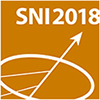Speaker
Description
P11 at PETRA III in Hamburg is dedicated to structural investigations of biological samples at different length scales. The beamline provides two state-of-the-art endstations: a crystallography experiment which is in user operation since 2013 [1] and an X-ray microscope which is utilizing tender X-rays between 2.4 and 10 keV and is currently under construction [2]. In future, a third experimental endstation for serial crystallography and pump-probe experiments will be available.
Basis of beamline design was to make full use of the brilliant source properties of the PETRA III sychrotron and to deliver most of the photons from the source into a very small focal spot at the sample position.
The P11 optics concept involves the generation of a secondary source at 65.5 m using three dynamically bendable KB mirrors. A second KB system which is installed further downstream can be used for refocusing the X-ray beam down to 4 × 9 μm2 (v × h) with full flux from the source (1.3 × 10 ph/s at 12 keV). Smaller beam sizes down to 1 × 1 μm2 with more than 2 × 1011 ph/s in the focus can be obtained by slitting down the secondary source at the cost of flux.
The flexible X-ray optics allow for tailoring the beam properties to the needs of the experiment: A large parallel beam is available for structure determinations from large unit cell systems, such as large molecular complexes [3]. A highly intense microbeam allows for serial crystallography experiments on microcrystals using liquid delivery systems like jets [4] and the newly developed tape-drive system [5] or micro-patterned silicon chips for fixed targets [6, 7].
The P11 crystallography experiment is operated between 5.5 and 30 keV and provides full SAD/MAD capability. The endstation is equipped with a high precision single axis goniostat with a combined sphere of confusion of less than 100 nm. Crystals can be rapidly exchanged in less than 20 s using a sample changing robot which is equipped with an inhouse-designed sample gripper. In addition, a large capacity storage Dewar provides space for 23 uni-pucks (368 samples). The Pilatus 6M-F detector in place allows for fast data collection with frame rates of up to 25 Hz. A full data set can be typically collected in less than 2 min. These design parameters make P11 ideally suited for screening a large number of crystals in very short time.
References:
[1] A. Burkhardt et al., EPJ Plus 131:56 (2016)
[2] A. Meents et al., Proc. SPIE 8851, 88510K (2014)
[3] K. Schulte et al., BMC Biology 14:14 (2016)
[4] F. Stellato et al., IUCrJ 1, 204 (2014)
[5] K. R. Beyerlein, IUCrJ 4, 439 (2017)
[6] P. Roedig et al., Sci. Rep. 5, 10451 (2015)
[7] P. Roedig et al., J. Appl. Cryst. 49, 968 (2016)

